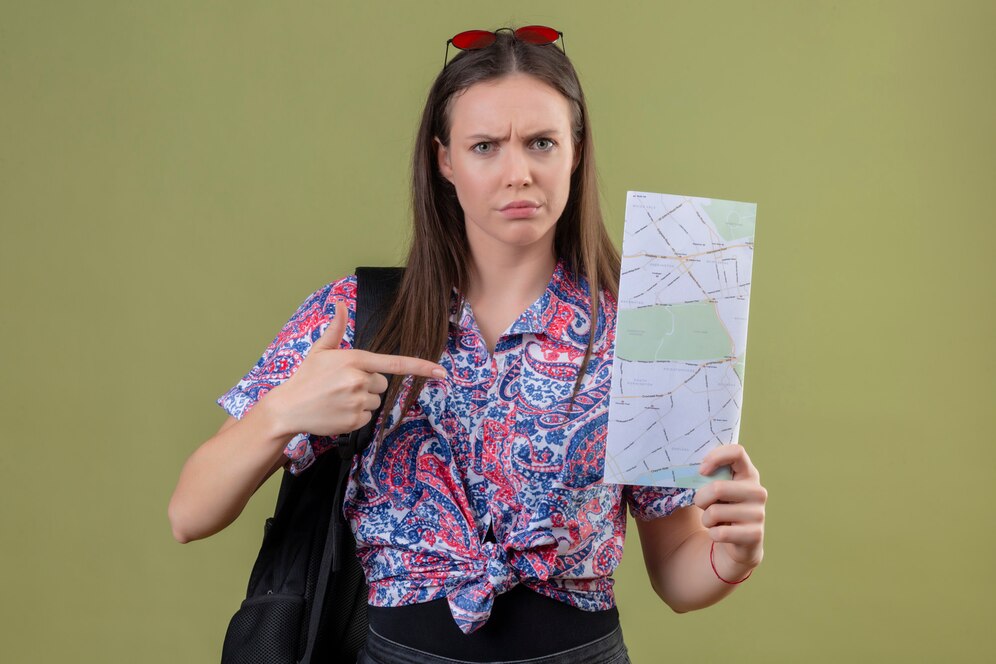Many travellers arrive in Australia on a Visitor Visa and later decide to stay longer to pursue studies. However, switching from a Visitor Visa to a Student Visa isn’t always straightforward. Confusing visa rules, paperwork and eligibility requirements can make the process overwhelming. So, how can you switch from a Visitor Visa to a Student Visa in Australia?
Before July 2024, it was possible to switch from a Visitor Visa to a Student Visa while in Australia if your visa did not have a ‘No Further Stay’ condition. However, under new rules effective from July 1, 2024, Visitor Visa holders must now apply for a Student Visa from outside Australia.
Read on to discover the step-by-step process, key requirements and tips to successfully switch your visa and start your Australian study journey.
Can You Switch From a Visitor Visa to a Student Visa in Australia? A Quick Overview
Switching from a Visitor Visa to a Student Visa onshore is no longer generally allowed as of July 2024. Visitor visa holders must now apply for a Student Visa from outside Australia. Previously, it depended on your visa type and conditions, such as whether you had a ‘No Further Stay’ condition or not.
You still need to enrol in a registered course and provide proof of financial support, health cover, and English language ability when applying offshore. Planning ahead and preparing your application carefully is essential to avoid mistakes and ensure a smooth process. While onshore switching is now restricted, with the right guidance, you can successfully apply for a student visa from overseas.
Need Help Switching to a Student Visa in Sydney? Talk to Lewis & Bollard Today
If you’re in Sydney and unsure how to move from a visitor visa to a student visa, you’re not alone. At Lewis & Bollard, we specialise in making this transition smooth, clear and stress-free. Whether you need help choosing the right course or preparing your documents, we guide you at every stage. We proudly support clients across Australia, including NSW, VIC and QLD.
Call us today at +612 9283 0888 or visit our Contact Us page to get expert advice that gets results.
What to Know About a Visitor Visa
A Visitor Visa (subclass 600) allows you to travel around Australia for tourism, visiting family or short business trips. Most visitor visas are valid for three, six or twelve months. You are not allowed to work during this time, and only short courses under three months are allowed.
This visa is ideal for sightseeing, family visits, or exploring Australia temporarily. It is not designed for long-term stays or full-time study.
When Do People Consider Switching to a Student Visa?
Some visitors enter Australia with one plan and later discover better opportunities. Others realise that they love Australia’s lifestyle, weather and education system. Let’s look at common reasons why someone might want to change their visa status.
You Want to Study a Full-Time Course
You may have joined a short course and realised you want to continue with a longer qualification. Or you may have always wanted to study in Australia, but first wanted to visit before committing. In both cases, switching to a student visa is a smart option.
You Found a Course That Matches Your Career Goals
Australia offers world-class education. If you find a program that boosts your career or gives you a pathway to permanent residence, it’s natural to want to enrol and stay longer.
Your Family Lives or Studies in Australia
If you have a spouse, children or other close relatives already living or studying in Australia, joining them through a student visa can help keep the family close and make life easier.
You Feel Safe and Happy in Australia
Australia is safe, friendly and full of opportunity. If you feel a strong personal connection and want to stay longer with a legal status, becoming a student is a good route.
You Want to Explore Career or Migration Pathways
A student visa may lead to work rights, post-study visas and possible permanent residency options. If your long-term goal is to live in Australia, studying here can be your first step.
Is It Possible to Apply for a Student Visa While in Australia?
As of July 1, 2024, visitor visa holders can no longer apply for a Student Visa from within Australia. This new rule aims to prevent visa hopping and ensures the integrity of the student visa program. Applicants must now apply for a Student Visa from outside Australia. If your visa previously allowed onshore applications, plan carefully to secure your student visa before entering Australia.
What Is the ‘No Further Stay’ Condition?
The ‘No Further Stay’ (condition 8503 or 8534) means you cannot apply for another visa while in Australia, except in very rare and serious situations. Previously, if this condition was not on your visa, you could apply for a Student Visa onshore. However, as of July 2024, onshore switching from a Visitor Visa to a Student Visa is generally prohibited, even without this condition.
This condition is usually placed on visitor visas to prevent long-term stays. While it no longer affects the offshore application requirement for Student Visas, it still applies to other visa types and situations.
How to Check If Your Visa Has This Condition
You can check your visa status and attached conditions by logging into the VEVO portal with your passport and visa grant details. Look for numbers like 8503, 8534, or 8535. These indicate the ‘No Further Stay’ condition applies.
Is It Possible to Ask for a Waiver?
Yes, you can request to remove the No Further Stay condition under certain circumstances. The Department of Home Affairs considers this if something major and unexpected has changed since your visa was granted.
This may include health problems, natural disasters, political issues or major personal changes. Strong evidence is required for approval.
Here are some steps to apply for the waiver:
- Write a formal request to the Department of Home Affairs.
- Include supporting documents, such as medical reports, police certificates or letters from authorities.
- Explain clearly why your situation has changed and how studying in Australia is necessary.
- Wait for approval before applying for any visa; do not lodge a new application until you receive written notice.
This process can take time, so start early and seek advice from a registered migration expert if needed.
Requirements for Applying for a Student Visa
To apply for a Student Visa (subclass 500), you must meet certain legal and academic conditions. Make sure all documents are ready and correct before submitting your application.
Here’s what you need:
- Enrolment in a registered course (Confirmation of Enrolment – CoE) – You must first apply and get accepted into an Australian educational institution.
- Financial proof to support tuition and living costs – Show you have enough funds to cover your fees, rent, transport and daily expenses.
- English language test results (IELTS, TOEFL, etc.) – You must show you meet the minimum English requirement of your course.
- Overseas Student Health Cover (OSHC) – You must buy OSHC to cover medical costs while studying in Australia.
- Genuine Temporary Entrant (GTE) statement – You must explain why you want to study and how it fits into your career or life goals. It should show that you plan to return home after completing your studies.
Planning Your Student Visa Application from Outside Australia
Here’s a step-by-step guide to preparing and applying from outside the country:
Step 1: Choose and Apply for a Course
Start by finding a course that matches your interests and career goals. Make sure the provider is CRICOS-registered, meaning it’s approved for international students. Submit your application and supporting documents to the school. Once accepted, you’ll receive a Confirmation of Enrolment (CoE), which is required for your visa application.
Step 2: Prepare All Required Documents
Collect all necessary documents before applying, including your CoE, Genuine Student (GS) statement, passport and financial evidence. Also include English test results and proof of Overseas Student Health Cover (OSHC). Keep your documents clear, complete and well-organised to avoid delays or refusal.
Step 3: Lodge Your Student Visa Application Online
Create an ImmiAccount on the Department of Home Affairs website. Fill in all details carefully and attach your documents. Pay the visa fee and keep your transaction receipt. Review everything before submitting to avoid errors that could affect your outcome.
Step 4: Wait for the Outcome
After submission, monitor your application through your ImmiAccount. Working rights and bridging visas are generally not relevant since you are applying offshore, but stay informed about any updates from the Department of Home Affairs.
What Happens If Your Student Visa Is Refused?
If your student visa is refused, you may have the right to appeal through the Administrative Review Tribunal (ART) or reapply from your home country with improved documents. Each case depends on the reason for refusal, so act promptly and carefully.
Always be clear, honest and consistent with your documents and statements. Providing false or misleading information can affect future visa applications. Consulting a registered migration lawyer can reduce errors, save time and improve your chances of approval.
Tips for a Successful Application
Switching from a Visitor Visa to a Student Visa in Australia takes careful planning and attention to detail. Follow these expert tips to improve your chances and avoid common mistakes that could lead to refusal.
- Plan Early: Apply for your student visa well before your intended travel date to avoid delays.
- Be Honest and Clear: Accurately explain your study goals in your GS statement.
- Show Strong Reasons for Studying in Australia: Make sure your course choice aligns with your previous education and career plans.
- Keep Paperwork Organised: Use checklists, folders or digital apps to track your documents and deadlines.
Summing Up
Shifting from a Visitor Visa to a Student Visa in Australia is a real option for many travellers who decide to pursue education while already in the country. However, applying for a Student Visa from overseas is now mandatory for Visitor Visa holders. While the process requires careful planning and accurate documentation, with the right preparation and guidance from a migration lawyer, you can successfully pursue your study goals in Australia.
Don’t wait until the last moment. Start planning your pathway today.




